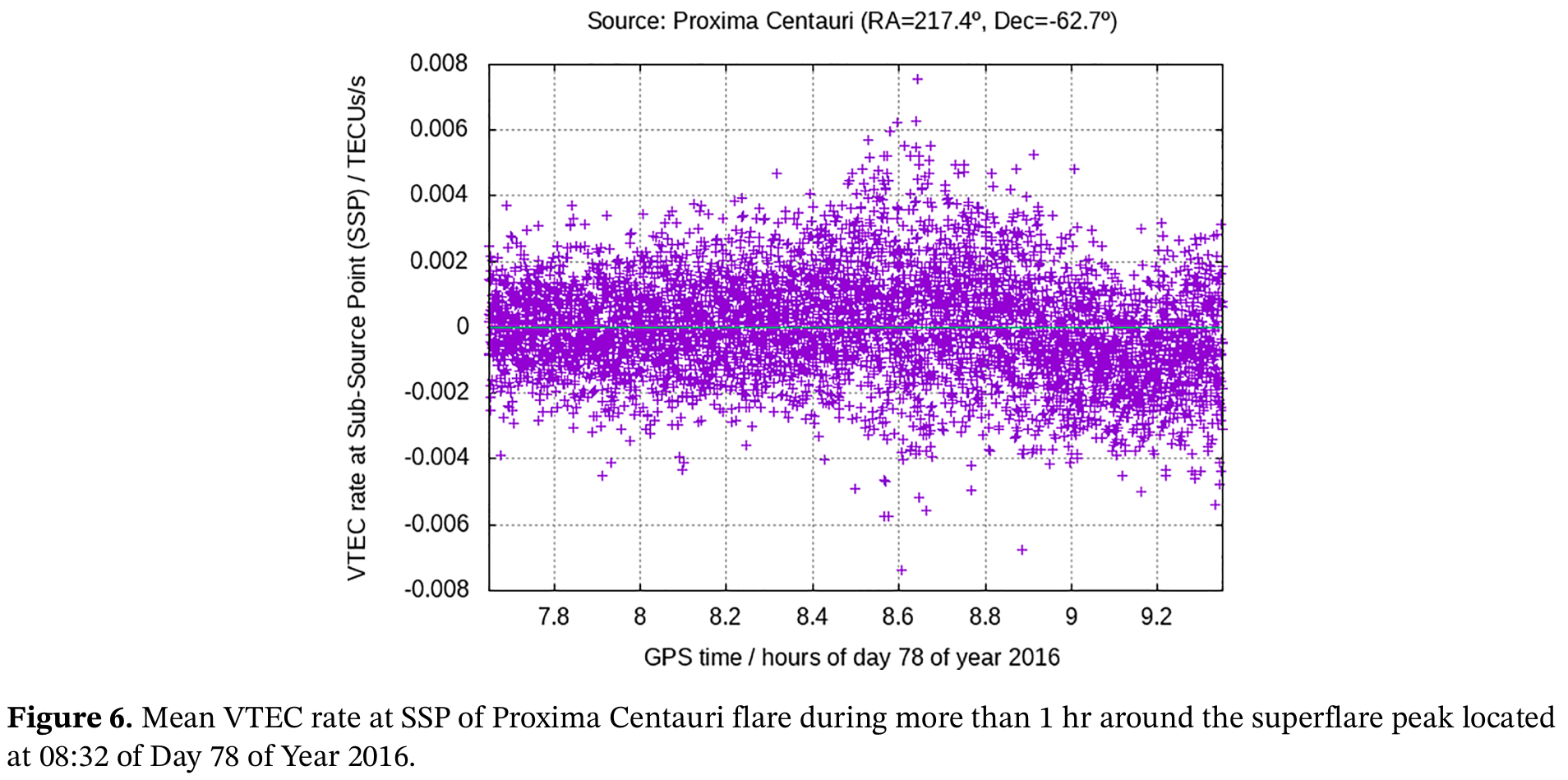GNSS measurement of EUV photons flux rate
The ionosphere, under the dual-frequency carrier phase measurements gathered from worldwide permanent receivers, can be used as a giant solar photometer, measuring accurately the EUV flux rate during solar flare events. The comparison with conventional direct EUV flux measurements from photometers on board spacecrafts (like SOHO-SEM) also show a greater availability of the GNSS-based technique, not affected by the occurrence of relativistic electrons associated to solar-flares. This was proposed in Hernández-Pajares et al. (2012), it is implemented in real-time, and it has been extended recently to stellar flares (Hernández-Pajares and Moreno-Borràs 2020) potentially opening the new field of GNSS-Astronomy.

References:
- Hernández-Pajares, M., A. García-Rigo, J. M. Juan, J. Sanz, E. Monte, and A. Aragón-Àngel (2012), GNSS measurement of EUV photons flux rate during strong and mid solar flares, Space Weather, 10, S12001, doi:10.1029/2012SW000826.
- Hernández-Pajares, M., & Moreno-Borràs, D. (2020). Real-time detection, location, and measurement of geoeffective stellar flares from Global Navigation Satellite System data: New technique and case studies. Space Weather, 18, e2020SW002441. https://doi.org/10.1029/2020SW002441
